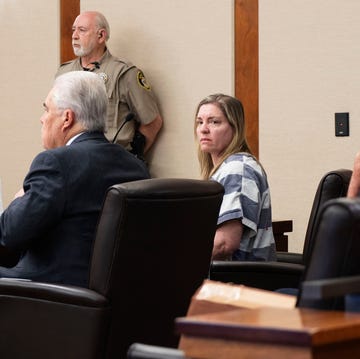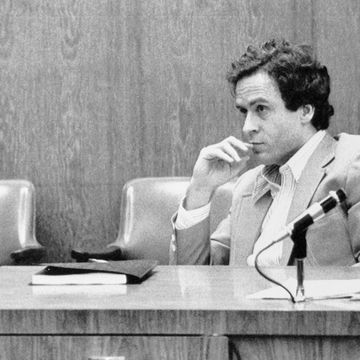Four years after Jeffrey Epstein took his own life in his prison cell, the suicide of the wealthy financier and accused sex trafficker continues to generate widespread questions and discussion. At the time of his death on August 10, 2019, Epstein—who was known for his high-profile ties to the world’s ultra-wealthy and powerful—was awaiting trial on charges of sex-trafficking minors.
Following a lengthy investigation, the U.S. Justice Department’s inspector general released a report on June 27 that found widespread negligence and mismanagement at the now-shuttered Metropolitan Correctional Center in Manhattan gave Epstein ample opportunity to end his own life. The report concluded no foul play was involved in Epstein’s death but cited “significant misconduct and dereliction of duties” among the jail’s staff.
The report confirmed information previously released by the Associated Press after it obtained more than 4,000 pages of partially redacted documents from the Justice Department’s Federal Bureau of Prisons. The records, obtained after the AP filed a Freedom of Information Act request and released on June 1, shed new light on the exact circumstances leading to Epstein’s death.
Following his arrest in early July 2019, Epstein was having trouble adjusting to his prison surroundings and, at various times, was placed under observation due to possible suicidal tendencies. Epstein grew increasingly discouraged as his court case proceeded and had made an unsuccessful suicide attempt on July 23.
Below is a timeline of the events from the final month of Epstein’s life. Unless otherwise stated, the information is attributed to the Federal Bureau of Prisons documents obtained by the Associated Press, including a detailed psychological reconstruction of the circumstances prior to his death by suicide.
Editor’s Note: If you or someone you know is struggling with suicidal thoughts or self-harming behaviors, call or text 988 to get help from the 988 Suicide & Crisis Lifeline.
July 6: Jeffrey Epstein was arrested on federal sex trafficking charges at the Teterboro Airport in New Jersey upon his return from Paris. He transported to the Metropolitan Correctional Center (MCC) New York, where he was placed in general inmate population. A facilities assistant noted Epstein appeared “distraught, sad, and a little confused” as well as “dazed and withdrawn.” She sent an email suggesting that a psychologist speak to him “just to be on the safe side and prevent any suicidal thoughts,” but the on-call psychologist was not contacted.
July 7: After 22 hours in general population, Epstein was moved to the Manhattan prison’s Special Housing Unit (SHU) pending reclassification due to the unusual increase of media coverage and awareness of his notoriety among the inmate population.
July 8: Epstein appeared in court and pleaded not guilty to his charges. Although Epstein denied suicidal thoughts and a forensic psychologist determined he didn’t have a mental illness, the psychologist recommended Epstein be preemptively evaluated for suicide risk. He was placed on psychological observation, a form of individual monitoring less restrictive than suicide watch.
July 9: Epstein underwent an in-person suicide risk assessment that determined suicide watch wasn’t warranted at that time. Still, it recommended he should remain on psychological observation “out of an abundance of caution.”
July 10: Epstein was removed from psychological observation on July 10 and assigned to the SHU due to “risk factors for suicidality and safety concerns” related to keeping him in general population, according to a grand jury indictment.
July 16: Epstein made a phone call to an unknown recipient. No recordings of the call exist, and it’s unknown whether it was a legal or personal call. “Given the limited information known about Mr. Epstein, knowledge of the content of any social calls would have been crucial to helping staff work with him,” the Federal Bureau of Prisons later stated.
July 18: A federal judge denies Epstein’s bail and request for pretrial release, which means he must remain in MCC New York pending his trial. “This was a significant disappointment for Mr. Epstein and likely challenged his ability and willingness to adapt to incarceration,” according to the Federal Bureau of Prisons, which later concluded that Epstein should have received further psychological assessments to determine his mental status.
July 23: Epstein attempted suicide and was found on the floor of his cell with a bedsheet strip around his neck. He survived, and his injuries didn’t require hospitalization, so he was placed on suicide watch and 24-hour psychiatric observation.
July 24: After 31 hours, Epstein was removed from suicide watch but remained under psychological observation for several more days.
July 26: On separate occasions on July 26 and 27, Epstein described himself as “a coward and as someone who does not like pain,” according to the Federal Bureau of Prisons.
July 28: Epstein complained that the toilet in his cell wouldn’t stop constantly flushing, which left him sitting in the corner of his cell with his hands over his ears. He claimed to be feeling agitated and unable to sleep at night.
July 29: Epstein was removed from psychological observation on either July 29 or July 30, though there is a discrepancy as to which exact date it occurred, according to the Federal Bureau of Prison.
July 30: Epstein was transferred back to the SHU, where he was assigned a cellmate and given the cell closest to the correction officers desk in the common area, according to a grand jury indictment. He continued to complain about his prison environment and difficulties sleeping, with medical records indicating he suffered from sleep apnea, constipation, hypertension, lower back pain, and prediabetes, according to the Associated Press.
July 31: Epstein appeared in federal court for the first time since his July 23 suicide attempt, showing no signs of physical injury, according to CNN. No tentative date was set for his trial, which was expected to last between four and six weeks. Upon his return from the court hearing in Manhattan, the U.S. marshals claimed Epstein was demonstrating “suicidal tendencies,” according to the Federal Bureau of Prisons.
August 1: Prison officials met with Epstein and conducted a suicide risk assessment, after which they determined it wasn’t necessary to place him on suicide watch.
August 8: Epstein purchased $73.85 worth of items from the prison commissary, including an AM/FM radio and headphones, according to the Associated Press, which described this as an indication he was attempting “to adapt to his jailhouse surroundings.”
August 9: A federal court unsealed roughly 2,000 pages of documents about Epstein’s case to the public, which prison officials said “further eroded Epstein’s previous elevated status,” according to the Associated Press. Epstein’s cellmate was transferred out of the prison as part of a routine transfer, and no new cellmate was assigned. Epstein met with his attorney and appeared upbeat afterward. Camera footage showed two guards failed to perform the required institutional count the night before Epstein’s suicide; they later admitted to falsifying records to avoid prison time.
August 10: A review of prison records revealed officers failed to complete the proper 30-minute rounds at 3 a.m. and 5 a.m., according to the Federal Bureau of Prisons. At 6:33 a.m, while breakfast was being served, Epstein was found unresponsive in his cell. According to The New York Post, Epstein was discovered in a kneeling position with a strip of bedsheet around his neck. The staff called for medical assistance and began life-saving measures, which were unsuccessful. He was pronounced dead at 7:36 a.m.
Colin McEvoy joined the Biography.com staff in 2023, and before that had spent 16 years as a journalist, writer, and communications professional. He is the author of two true crime books: Love Me or Else and Fatal Jealousy. He is also an avid film buff, reader, and lover of great stories.














